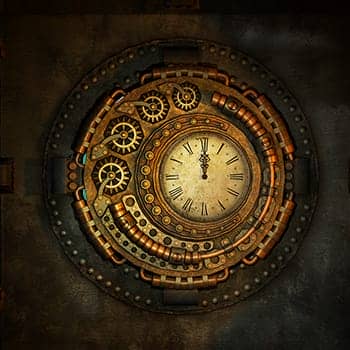 It’s incredibly helpful to remember dates in history.
It’s incredibly helpful to remember dates in history.
Not only that, but you want to also remember the names of the people involved.
For example, I’ve taught memory techniques for over ten years and live stream a lot. My credibility soars every time I accurately recite the dates certain memory masters and other historical figures lived.
In your case, you might need to remember names and dates in history to pass an exam.
Or perhaps you want this kind of knowledge for personal satisfaction, to remember your family tree or to help your clients better by remembering critical dates related to their situation.
No matter the reason, there’s a fun and relatively easy way to remember dates and names at the same time.
Ready?
Let’s dive in!
How to Memorize Important Dates & Names: The Most Effective Process
As we get into the ancient memory techniques people have been using for centuries, here’s a point that might seem obvious. But we need to cover it all the same:
Names and numbers are two different things. They require memory techniques that are definitely related, but the brain perceives names and numbers differently.
With that in mind, I’m going to show you how to use both techniques at the same time. Just understand that different mnemonic devices need to be use in combination.
But don’t worry – they’re not hard. In fact, they’re a lot of fun!
Step One: Learn to Remember Names First
Learning how to remember names is one of the simplest place to start.
Basically, start by looking for sound and spelling similarities you can use to forge associations. I memorize a lot of important philosophy, both its history and its ideas.
When I come across a name I want to remember like Diogenes, I start by figuring out how the name is pronounced. Then I make an association, which in this case involved Princess Diana, who was often called Lady Di.
For the second part of the name, I thought of Walter Ong. The sound of “Ong” is not nearly as close as Di, but it doesn’t have to be 100%. It just needs to serve as a trigger as the name is being learned.
Step Two: Picture the Person Behind the Name
If you’re anything like me, or have full-blown aphantasia, it’s not always easy to form a mental image of a historical figure.
But that’s no reason not to briefly look the person up. Usually there’s either a photograph, illustration or painting. Getting a sense for the look of a person just makes sense overall as you expand your historical knowledge because many others will have developed impressions based on those images.
Step Three: Simplify the Historical Information
A while ago, I was memorizing the names and dates of my favorite philosophers while sitting in my dentist’s waiting room.
I had a book about the history of philosophy on my lap and started placing the names and their dates into a Memory Palace. But before I started to use this special technique (which you’ll learn more about in a moment), I focused specifically on “chunking” down the dates associated with these historical philosophers.
Chunking is a science-backed learning technique where instead of focusing on 1596-1650 for Descartes, you start just by remembering 15.
Although this approach to memorizing dates might seem slow, it’s actually faster in the end for reasons you’re about to discover.
Step Four: Associate Bit By Bit
For now, let’s assume that you’ve already memorized the name Rene Descartes for the following example. You’ve checked out his Wikipedia page and now you’re ready to memorize the date he was born on and when he died.
The key to association is to think first using chunking about 15 and link it to anything you already know that reminds you of this number.
Now, immediately you might think… 15… that’s too abstract.
And that’s where memory techniques like the Major System or a PAO System come into play.
These simple and fun mnemonic techniques give you images for numbers almost instantly.
That way, you can use something called the story method to place images in the hands of your historical figure.
My associations for these numbers are a bassist named Tal (15) and the rock band, Bush (96).
My image for 16 is always Dashiell Hammett and 50 is Wonder Woman.
Please take a moment to learn these powerful number techniques. They provide the most effective and efficient means to rapidly memorizing historical dates. If you find that simpler number techniques would be a better start, you can explore number rhymes.
Although my mnemonic examples may not work for you, once you know the theory, scientific research has shown that personalizing your own mnemonic system simply works. Scientists call the process active recall.
Step Five: Add More Names & Dates
Whether you’re studying for a history exam, memorizing your family tree or just want to know more about history, you want to rapidly remember not just one name and date. You want to be able to recall historical facts by the dozens.
For larger goals, such as memorizing the names and dates of all the presidents, you need to use the Memory Palace technique I mentioned above.
In the example above, you see Rene Descartes in a bar.
That’s because, although I was at the dentist, I was thinking about a bar in Toronto where my dissertation supervisor and I used to talk about philosophy for hours on end.
It’s a much better Memory Palace than the dentist’s office because the pub has a personal association with philosophy for me.
The exact choice of where I placed Descartes and his dates involves using the method of loci and the journey method. By using these additional principles, it’s easy to add new names and dates in historical order. Like you see in this illustration:
Step Six: Review Using Spaced Repetition
The penultimate step involves revisiting your associations to help develop long-term memory of the historical information.
Basically, I use spaced-repetition according the well-established insights of Hermann Ebbinghaus. Ebbinghaus identified something called the forgetting curve and found ways to increase retention.

To increase my retention of all kinds of historical facts, I tend to revisit information I’ve encoded using the techniques you’ve just learned:
- 5 times the first day
- 1 time for each day the following week
- 1 time a week for the following 5 weeks
This is a general pattern, one that can be reduced by following the next step.
Step Seven: Plant the Seeds Even Deeper In the Soil of Memory
Some people complain that using spaced repetition feels like rote learning. If you’re not using images like Wonder Woman for the number 50, I would agree that rote is boring.
But that’s why so many of us love accelerated learning techniques. By transforming dry and boring facts into dynamic images and ideas, we mnemonists (people who use memory techniques) start to feel more excited and alive than ever before.
That said, it’s still possible to forget information when using memory techniques.
So as a best practice to avoid unwanted forgetting, here’s what I suggest:
- Keep a “Memory Journal” where you write out everything you’ve memorized by hand
- Write essays or summaries in your own words to develop deeper knowledge, understanding and recall
- Use reflective thinking best practices to generate more specific and broader insights that stimulate memory
- Engage in plenty of discussions with a variety of people
- Remain humble
- Learn from mistakes
These final two points are so key. As we’ve learned from people with high IQs, it’s important to never take knowledge for granted.
Plus, every time you fumble a piece of information, you’ve just gotten an opportunity to learn more about memory techniques. Rest assured, I’m friends with the most impressive memory athletes in the world and they still make mistakes, both in competition and while learning.
If you’d like more lessons along these lines that will help you remember tons of historical information while keeping you humble, get my free course now right here:
It takes you through everything you need to know to beat the “forgetting curve” we just discussed.
And it will help you come up with all kinds of associations for names and historical dates at blazing fast speeds.
So what do you say?
Are you ready to get out there and conquer history?
Many treasure chests of knowledge await!
Related Posts
- How To Use Memory Techniques At The Grocery Store
Check out these quick tips for practicing memory techniques at the grocery store. You'll learn…
- The Memory Code: Prehistoric Memory Techniques You Can Use Now
Lynne Kelly, author of The Memory Code, shares her personal experiences learning ancient memory techniques…
- Can You Memorize Books Page By Page Without Using Memory Techniques?
The answer? Probably not.









